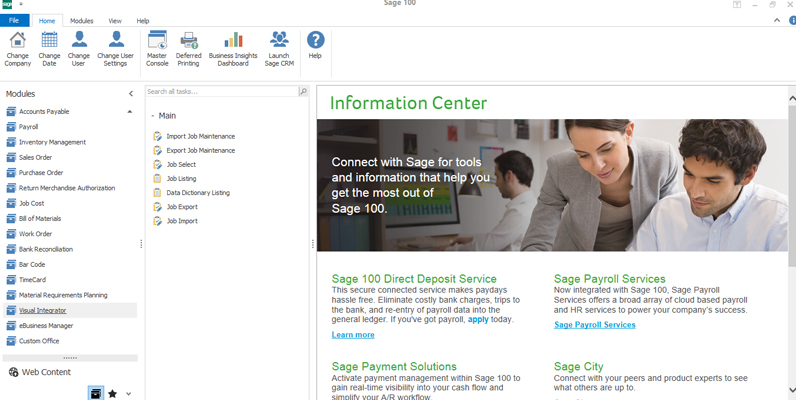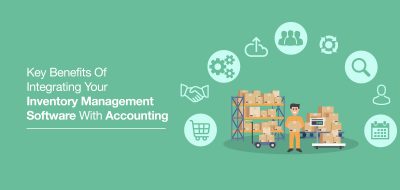Visual integrator has been designed to facilitate seamless integration between sage 100 ERP (formerly sage ERP Mas 90,200, 200 and SQL ) data and other business applications. Visual integrator can import / export to any ODBC-compliant source, without the need for intermediary data file such as Excel or ASCII delimited . If the data import is on regular basis then user find VI is seamless for integration.
Importing and exporting data from Visual Integrator is a simple process. The power of Visual Integrator, however, lies in the additional integration commands that are available. For example, Visual Integrator jobs can be scheduled to run at prescribed intervals of any length. If you need to keep your Sage 100 ERP customer masterfile synchronized with a prospect database, you can set the import to run automatically every day, every hour, or even every minute. Imports can be chained together so that an invoice import automatically follows a customer import. You can even instruct the program to run a script file automatically upon successful completion of an import.
The below are few features which you normally find very useful in using Visual integrator.
- Import job maintenance
- Export job maintenance
- Job select
- Job listing
- Data Dictionary listing
- Job Import
- Job export
Import job maintenance: Use import job maintenance to define and maintain jobs that are used to import data into software. After an import job is defined, this task can also be used to execute the job immediately or the job can be added to the job menu.
Export Job Maintenance: Use export job maintenance to define and maintain export jobs that are used to export data from the software to an external file or database. After an export job is defined, this task can also be used to execute job immediately or to schedule how often the job is to be run.
Job Select: Use job select to select and start any defined import or export job.
Job Listing: The job listing allows you to print a list of existing jobs, along with job descriptions and job names .
Data Dictionary Listing: The data dictionary listing provides a list of information related to the type of data contained in each data file . This report can be used as a reference when selecting a specified data file import or export. Detailed information for individual data item files for each data file is provided . Item name, type , data type, key and mask/length information for each data item is provided. In addition, import validation information for each data item, and record type and file linkage information for each file can be printed.
Job Export: Use job export to output definition information for one or more jobs to a specified file. The definition information can then be imported into another system using job import. This task is useful when import and export jobs are defined at a separate system from those used to execute jobs .
Job Import: Use job import to import the definition information for one or more jobs from a file created by job export. This task is useful when you want to execute an import or export job that has been created on a separate system.
DBSync offers a complete on-demand integration between Sage accounting and CRM software and helps you to stay close to the customers. Our adapter offers seamless data integration with CRM systems like Salesforce, Microsoft Dynamics CRM and other databases and keeps you updated about the business processes.
For more information: https://www.mydbsync.com/product/accounting-sage
https://help.mydbsync.com/docs/display/dbsync/Sage+100+Connector
https://help.mydbsync.com/docs/pages/viewpage.action?pageId=11698424&navigatingVersions=true






